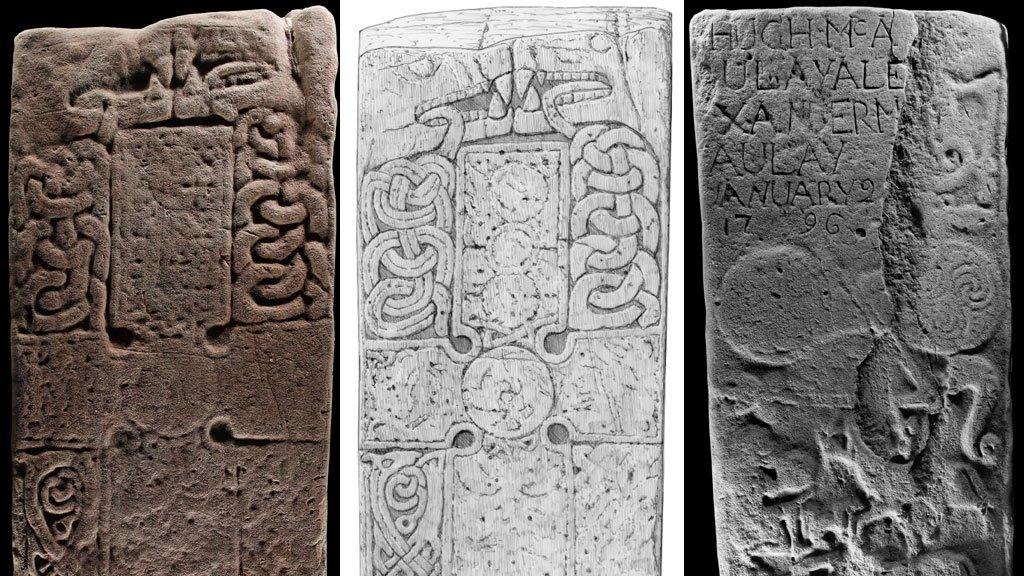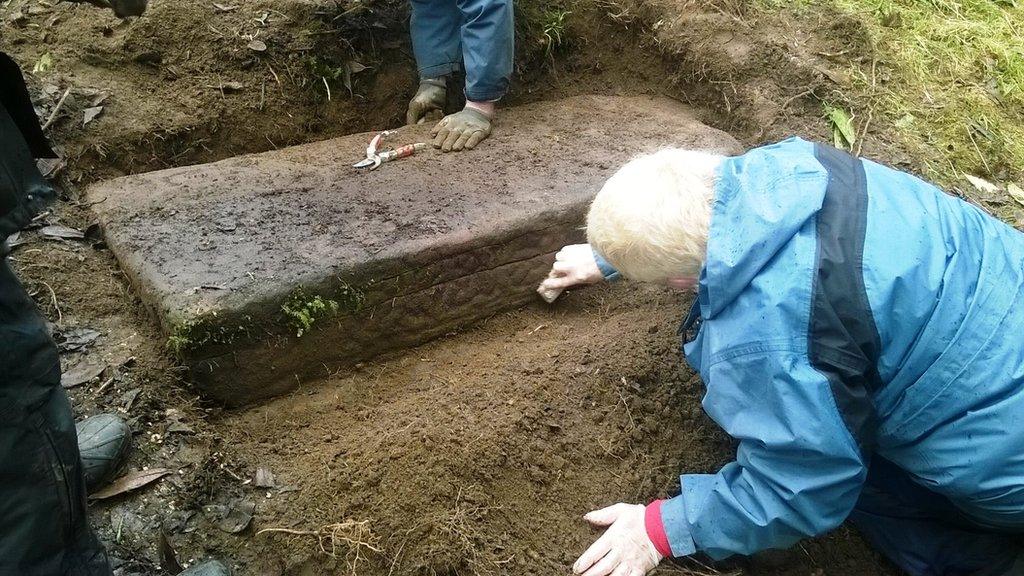Pictish carved beasts 'unlike anything found before'
- Published

Pictured from left the stone's carved beasts, an illustration of the beasts carvings and a side of stone later used as a grave marker
A 1,200-year-old standing stone discovered in the Highlands has carvings never before seen on a Pictish stone, archaeologists have said.
The stone was found lying in the ground and covered by vegetation at an early Christian church site near Dingwall.
Archaeologists have now revealed the side of the stone that was down in the earth and hidden from view was decorated with "two massive beasts".
Just over a metre of the original two metre-tall (6ft) stone survives.
The beasts were carved down the side of a cross.
John Borland, of Historic Environment Scotland and president of the Pictish Arts Society, said: "The two massive beasts that flank and surmount the cross are quite unlike anything found on any other Pictish stone.
"These two unique creatures serve to remind us that Pictish sculptors had a remarkable capacity for creativity and individuality.
"Careful assessment of this remarkable monument will be able to tell us much about the production of Pictish sculpture that we could never have guessed at."

The stone was removed for study and conservation work following its discovery in August
The stone, which was used as a grave marker in the 1790s, was discovered in August by Anne MacInnes of North of Scotland Archaeological Society (NOSAS), external.
NOSAS and the Pictish Arts Society have launched a crowdfunding campaign to raise £20,000 towards the cost of conserving the stone.
It is one of only about 50 Pictish cross-slabs of its kind known to exist.
The Picts created cross-slabs, intricately decorated standing stones.
They also constructed impressive hill forts to defend themselves against rival tribes and invaders.
The Picts battled against the Romans, Angles and the Vikings.
- Published23 August 2019
